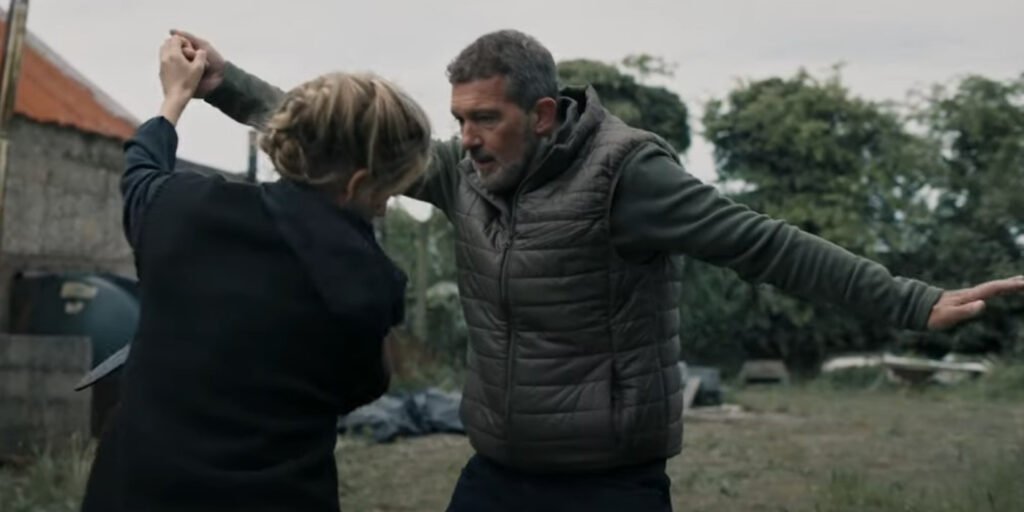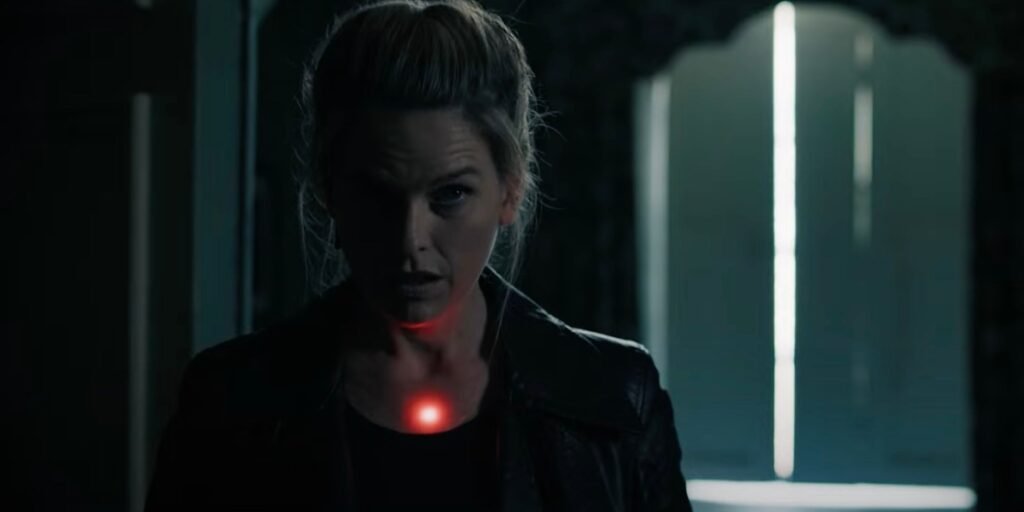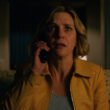Director Jon Keeyes is back in full force with his new thriller Cult Killer now playing in theaters nationwide. Starring Alice Eve and Antonio Banderas, this twisty, treacherous story follows Detective Cassie Holt (Eve) as she studies under Private Investigator Micael Tallini (Banderas). All is well until Tallini is swiftly murdered and Cassie must uncover not only who committed the heinous crime but what secrets are fueling a devious cabal in the underpinnings of the town.
I got the chance to talk with Keeyes about the logistics of shooting some of the cleverly edited sequences, the breadth of his dark themes, and what lies ahead for him (and Antonio Banderas)!
Jon Keeyes Recognizes Antonio Banderas’ Acting Prowess
ETHAN SIMMIE: Jon, first off, I want to say thank you for taking the time, obviously, to talk with me today and congratulate you on your new film Cult Killer.
JON KEEYES: Thanks. It’s great to be here and it’s been exciting seeing the reactions to the movie and everybody’s digging it. It’s been a whole lot of fun.
ETHAN SIMMIE: Now, I want to start off with a question. This isn’t your first time working with Antonio Banderas. You’ve worked with him on a prior movie Code Name Banshee as well. I’m curious what it is about Banderas that he brings to your films that you keep returning to him in your movies.
JON KEEYES: So one of the things I discovered when I worked with Antonio the first time. Obviously, there was synchronicity. He and I clicked and that’s always a great thing as a director to click with your actor and be able to get on the same page. One of the things that I love about Antonio, and I don’t think enough people realize it, is what an amazing actor he is. I think we definitely think of him as an action guy and he does comedy so incredibly well but he’s also just one of these just amazingly talented actors. And I realized how much so when we did Banshee together in just the levels of emotion that he can go to and the way that he can ride different levels with just minutia, you know, just small little things. Particularly with Cult Killer when we were putting it together I knew I needed somebody that could ride a lot of different levels and, you know, bring this sympathy to the character and this fatherly nature to the relationship with Alice Eve’s character. So that was one of the reasons I really wanted to work with Antonio again as I thought he could bring a whole lot of amazing layers to it and he definitely agreed. So it was a great fit.
ETHAN SIMMIE: I’m curious about the storytelling style of this film. Now it essentially uses kind of a non-linear timeline. Flashbacks play a large key role in informative and narrative drivers of this movie. What made you want to tell Cult Killer in a way like this? And did that pose maybe any shooting difficulties or creation problems while you were making the movie?
JON KEEYES: It didn’t. It didn’t actually create any problems in the logistics of making the movie. You know, honestly, it actually made things even easier. So when Charles Burnley [writer] presented the script to me one of the things that I thought was so intriguing… I’m not always a fan of flashbacks. I think that they need to be used appropriately with specific storytelling technique in mind. The thing that I loved about Charles’ script and the way that it worked was usually you’ve got a protagonist who is learning lessons as they’re going throughout the movie and there’s usually somebody that they’re working with. In this case, it would be Alice Eve and then Antonio. But because of the nature of the story, without giving too much away for people who haven’t seen it yet, the thing that I really loved about the way flashbacks were used is that as she’s making her way through the movie, she’s learning, but she’s learning about lessons she’s learned from the past. So we’re getting to kind of see everything moving forward in real time even though we’re constantly intersecting it with flashbacks. And I thought that was a really interesting way of doing it. Now, one of the things that actually helped with the storytelling was we filmed all of Antonio’s scenes first. So Antonio and Alice were able to work through all of their flashbacks in that entire arc of their characters at the very beginning of the shooting schedule which then informed Alice in a lot of ways of how she was going to interact with the rest of the characters in the movie because she already had the “memory” and the emotional resonance of that relationship with her. She carried that through.
Antonio Banderas and Alice Eve’s Chemistry Is Palpable

ETHAN SIMMIE: Right. I do think some of the most effective scenes in the movie are the ones with Alice and Antonio Banderas’ characters sitting down and just speaking and talking. How was their chemistry throughout this process? Because it seems pretty palpable on camera.
JON KEEYES: It was incredible. They clicked immediately and that was that was a real blessing. Yeah, they clicked immediately. I mean, they didn’t get a whole lot of time to rehearse together prior to the shooting days but they spent some time talking and we spent some time all sort of working through the scenes and the emotional arcs and such. But yeah, their chemistry was fantastic and they hit it off immediately.
ETHAN SIMMIE: Now, another editing technique that you brought to this movie was the use of a split screen during a phone conversation between the killer and an investigator. Of course, this is a widely famous technique. It’s been employed by the likes of Alfred Hitchcock and Brian De Palma to great success throughout the years. How did you decide that you wanted that scene to be shot that way and told that way instead of a much more standard kind of continuous back-and-forth cut?
JON KEEYES: So when Charles gave me the first draft of the script, there was only one split screen, even though the movie ends up with three, but there was one split screen in it. And I asked Charles, I said, “Why did you write that in?” And he just jokingly was like, “Well, I just got done watching Narc and just thought it would be fun to throw it in.” Well, the thing that I like about it is we’ve got this relationship between Alice Eve and Shelley Hennig through the movie but they’re really not together. Like you said, it’s mostly phone calls and I was like, I think that there’s a way to bring them together visually on the screen so even though most of the relationship is done over the phone it’ll feel like they’re together working off of each other. And so he and I and then Austin [Schmidt], my DP, the three of us, actually worked together to figure out where all that we want to do these split screens and how can they be the most effective. I mean, even one of them technically happens in the same room even, or in two different rooms, even though they technically could just walk out and stand next to each other and talk. I think through the fun of the split screens we’re able to put them in the same frame and then we were able to shoot them together simultaneously. So we were able to put our locations together in a way that each of them had a small earwig so they could hear each other and we had camera setup on both of them and they could act together in real-time, which a lot of times, particularly with phone call scenes, you don’t get to actually do that. So it allowed them to be right there with each other in the scene truly reacting off of each other.
‘Cult Killer’ Director Discusses the Film’s Twists

ETHAN SIMMIE: Now, there’s there’s a couple twists that this movie takes. And of course, I don’t want to spoil anything for anybody that hasn’t seen it. But in regards to the phone conversation I really admired the fact that this script is at least semi-self-aware of itself especially from the side of the killer and what has been kind of transpiring. Is there anything about the script that like initially jumped out to you like that that really made you get attached to something like this?
JON KEEYES: I’ve known Charles for a very long time and one of the things that I absolutely love about him is his dialogue writing. I think he’s got some crisp, original dialogue that pops and snaps. Even though the script itself, you know, it’s a fairly straightforward genre script story. The thing that I love is that I felt like he elevated everything. He elevated everything with his dialogue. He elevated things with surprises. But I think even more so there’s a lot of, like you said, there’s a lot of twists in it. And is the bad guy really the bad guy and we’re dealing with a lot of darkness within which are all things that attract me. And I felt like he wrote just such an original script in which you not only care for the protagonist, being Alice, and you care about Antonio, but you also care about the killer and you begin to understand and relate to what they’re going through. I mean, in a way, the movie is a revenge movie. And so you want the audience to understand what these characters are going through. And that was the thing that really grabbed me the most was an intriguing story but it was elevated, it was intelligent, and I cared about all of these people even though there’s additional bad guys and villains that are happening in this movie that slowly sort of unveil themselves to the audience.
ETHAN SIMMIE: I love that you brought up the dark thematic twists that this movie takes because it does, in fact, take a pretty dark turn, especially in the final act. A lot of uncovering of some pretty dirty mysteries about the secrets that the town has been holding. This opens up huge themes about money and power and injustices that can be linked and this bond of a shared trauma between two different people on two different sides of life and the law. How did you decide visually how dark you wanted to go towards the end of the film and then how much thematic distance you wanted to cover with those scenes?
JON KEEYES: We spent a lot of time discussing the story and the thematic nature of the movie early on, particularly in development and then we were in when we were pre-production because I, as a filmmaker, I’ll go as dark as somebody will let me. In a way I needed other people around me to rein me in a little bit, for ratings, you know, commercial ability, things like that. So we spent, the producers and I and the distributors, spent a lot of time early on discussing how far we would go thematically. Thematically, I think we hit the right points. I kind of figured that one out early on with what the theme was and what to unveil to the audience. I think we kind of nailed that down pretty well so that we could make the point and have emotional resonance without turning it into exploitation. But with in terms of what we want visually that was a lot of conversations we had of how far we could take it. So yeah, it was a give and take. I think that RJ [Cooper], who edited the movie, did a really great job. We’ve definitely got a lot of graphic scenes and visuals and we’ve got a lot of blood and a lot of violence. It was just a matter of fine-tuning it and finding that right balance where we can make the emotional impact but not turn the audience off and I think we succeeded in doing that.
Antonio Banderas & Jon Keeyes Are Teaming Up Again for ‘The Cleanup Crew’

ETHAN SIMMIE: Yeah, I agree. I do think you guys succeeded quite well. I think it was very effective especially come towards the end of the movie. I think viewers are in for a nice visual surprise for sure. I know this movie just came out but you’ve got a pretty good track record of having some quick turnarounds and making movies one after the other. Have you begun thinking about or writing or storyboarding out what might be next for you?
JON KEEYES: 100%. So when we were in Ireland shooting Cult Killer I actually did back-to-back movies with Antonio. We did Cult Killer and then we did an action-comedy called The Cleanup Crew that the same company is going to be releasing May/June and I think I’m still waiting for the date. That was exciting that Antonio and I were able to do the two different movies together at the same time with two vastly different tones and genres and stuff. And then beyond that, like everything, I’m always juggling. I’ve got like ten different projects and I’m talking with lots of producers and companies. I don’t know if the next one will be dark like Cult Killer or it’ll be another action-comedy or what it might be but I’m a storyteller at heart. Whether it’s horror or action or comedy or whatever I’m always chasing character stories and then let the genre be part of that.
ETHAN SIMMIE: Well, now that you mention that, I have one additional question for you here. I’m curious from my perspective, what is that like double dipping, especially as a director and with Antonio Banderas? You’re making two very distinct genre films that require different things for different projects. How do you guys go about that on a day-to-day or week-to-week basis?
JON KEEYES: It was interesting. Fortunately, one of my producers, Richard Clabaugh, who was with us, goes back to the Miramax and Dimension film days. He’d been involved in a lot of movies like that so he brought a lot of his experience on how to structure this. The two things that I think worked out the best for us was that we kept the same crew for the entire movie for both of the movies. Everybody started prepping both movies at the same time and then once we started, we actually filmed all of Antonio’s stuff Cult Killer and then we just immediately switched gears. Once we got done filming all of the scenes for that then we switched over to the other movie and we started shooting with those and just continued on with that movie until it was done and then circled back and finished last [inaudible]. We very clearly mapped it out. We treated it as one very big, long movie. But what really helped was having two entirely different looks and tones. The fact that one was more of a comedy and obviously this one is much more of a dark movie, it made it a whole lot easier for all of us, including Antonio, to pivot because the genres were so completely different. It just took it was a big it was just a big, massive schedule map and we just kind of treated it as one really long shoot with two tonal differences.
ETHAN SIMMIE: I love that. That sounds very exciting. I’m very excited to see that film and I’m glad that you guys made Cult Killer. I wanted to thank you for taking the time to talk. I’m looking forward to your next project and I’m so grateful that we got to speak.
JON KEEYES: Well, I really appreciate it. Thanks for having me.
ETHAN SIMMIE: Thank you.
Cult Killer is currently playing in theaters nationwide. Follow the Agents of Fandom socials for the latest entertainment news, reviews, and coverage.











